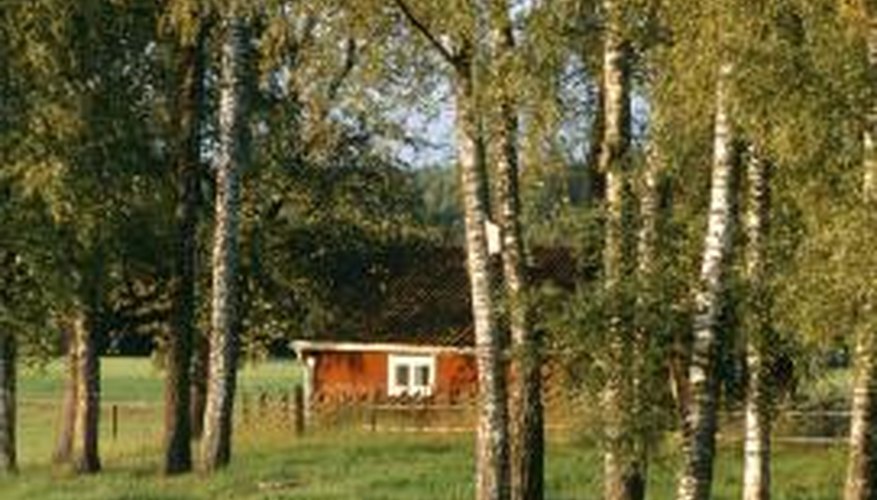The silver birch (Betula alleghaniensis) is one of the hardiest North American native trees, surviving winters as far north as U.S. Department of Agriculture Plant Hardiness Zone 3. Also called yellow birch, these tough natives are hard to find in nurseries but are worth the effort, as they're resistant to leaf miners and the bronze birch borer, which are serious insect pests on most birch species.
Life Expectancy
Silver birch trees often live 150 years or more when well sited, according to the U.S. Department of Agriculture. In old growth woods, the silver birches are often 200 to 250 years old. Life expectancy is much shorter when silver birch is grown in warm areas or subjected to drought.
Oldest Known Trees
The Eastern OLDLIST is a university-compiled database of the oldest known specimens of many tree species in eastern North America. The oldest silver birch on their list, aged 387 years old in 2010, is at Algonquin Park in Ontario, Canada. There are also two old silver birches at Raquette Lake, New York, one 367 years old and one 309 years old as of 2010.
About Silver Birches
Silver birches are large trees reaching 60 to 75 feet tall in the home landscape and as much as 100 feet in the wild. The 3- to 5-inch, oval leaves are dark green in the summer and bright yellow in the fall. Broken twigs give off a wintergreen odour. The bark is showy, turning amber or silver and exfoliating in thin strips. Silver birches prefer full sun, so use them as specimen trees or naturalised near the edge of woods.
- Silver birches are large trees reaching 60 to 75 feet tall in the home landscape and as much as 100 feet in the wild.
- The bark is showy, turning amber or silver and exfoliating in thin strips.
Culture
Silver birch grows best in the northern tier of states and in mountainous regions where the soil and air temperatures stay cool. For best growth and longest life, grow them in full sun in cool, moist soil. They are intolerant of drought, which stresses the trees and shortens their lifespans. Young trees need protection from deer and rabbits.
- Silver birch grows best in the northern tier of states and in mountainous regions where the soil and air temperatures stay cool.
An Alternative
If you're gardening in an area too warm for silver birch, a good alternative is cherry birch (B. lenta). Cherry birch is similar in appearance, although the bark doesn't exfoliate as freely as that on silver birch. Cherry birch grows well in USDA zones 3 through 8.
